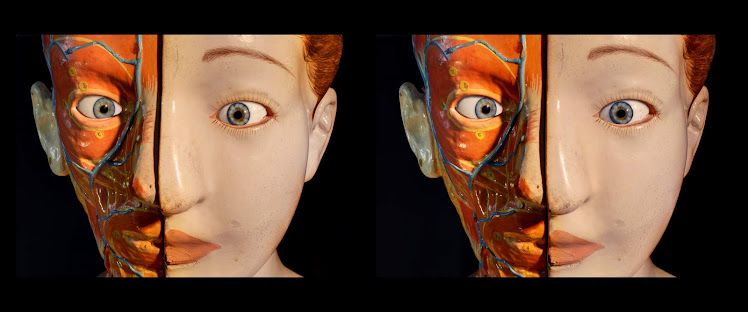I should at this point get a little ahead of myself to talk about the 3D software. At first, I was just trusting my eyes, and with the composite images, you pretty much have to do that, as the software only aligns single images with no layers. I was recommended StereoPhotoMaker by a 3D mate on Flickr, and since it is Windows software, I had to update my Parallel Desktop so it would run with Snow Leopard on my Mac in order to use it. It is reallypretty good and does a good job of aligning images both automatically and manually, but it is typically clunky Windows interface and the save function especially leaves a lot to be desired. I had preferred cross eyed images at first, but discovered that Anaglyphs actually had advantages over cross eyed images, AS LONG ARE THERE ARE NO REDS OR CYANS IN THE IMAGE, and were great with Black and White, and the typical desaturated images I tend to like. I also happened to do some Google research in French to see if anybody over there was doing something with 3D, and it turns out that these two French guys Etienne Monneret & Didier Leboutte have come up with a great program called Anabuilder, which works with both Windows and Mac, and comes in English. As its name indicates, it is mostly designed for Anaglyphs, but will accept and work also with side by side and cross eyed images. I found the auto align function is actually better than the one in StereoPhotoMaker. The image above was aligned with SPM. The version below was re aligned in Anabuilder. Click here for a full screen version.
AnaBuilder also has an automatic "align all behind the screen" setting. All the manual adjustments are possible too, and it even has a Phantogram Builder function, Phantograms being my newest discovery and main interest now from an Artistic standpoint. The version below was pushed back behind the screen, but has a strong ghosting effect on the large post up front. Click here for a full screen version.



















